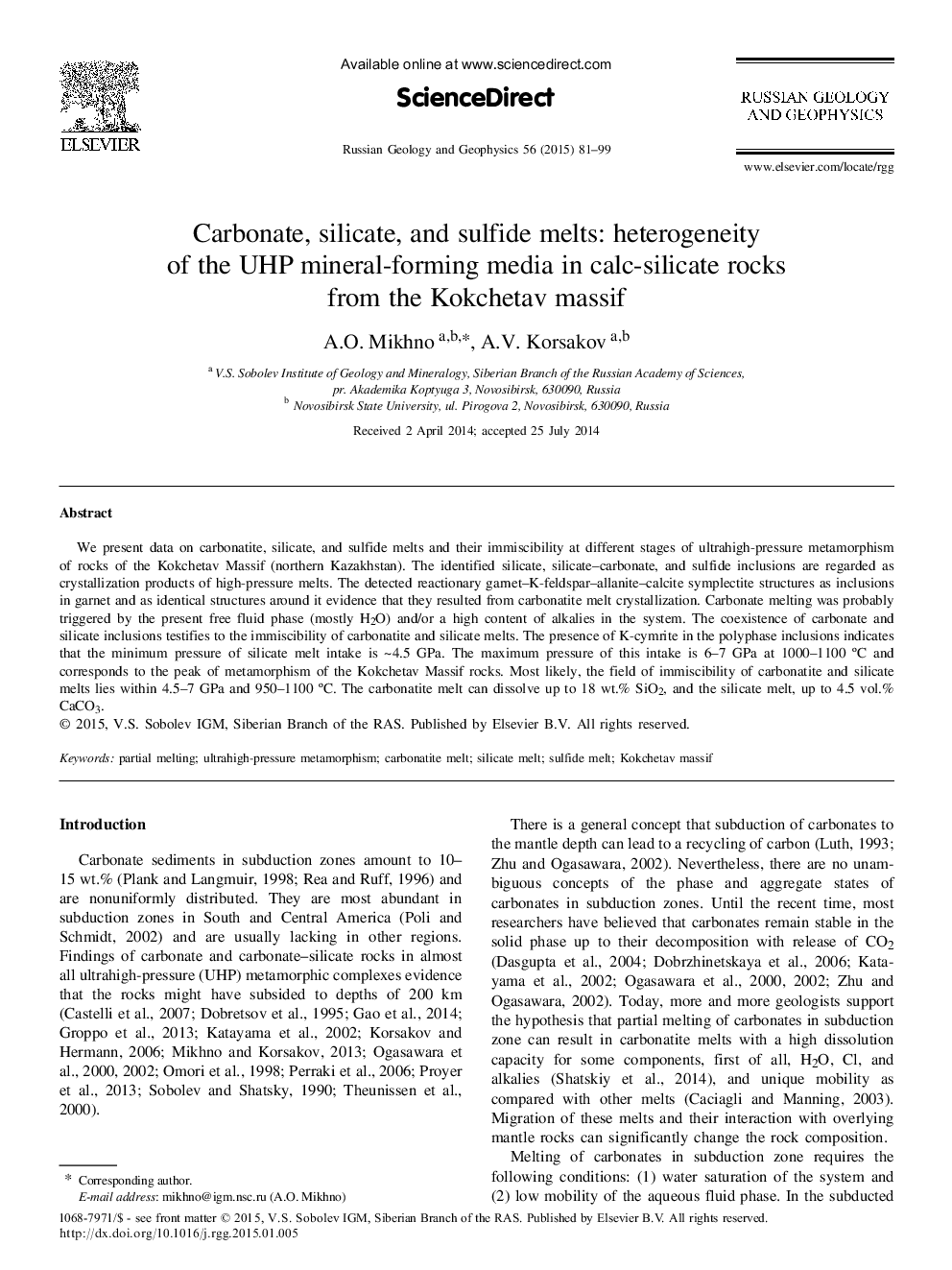| Article ID | Journal | Published Year | Pages | File Type |
|---|---|---|---|---|
| 4738442 | Russian Geology and Geophysics | 2015 | 19 Pages |
We present data on carbonatite, silicate, and sulfide melts and their immiscibility at different stages of ultrahigh-pressure metamorphism of rocks of the Kokchetav Massif (northern Kazakhstan). The identified silicate, silicate-carbonate, and sulfide inclusions are regarded as crystallization products of high-pressure melts. The detected reactionary garnet-K-feldspar-allanite-calcite symplectite structures as inclusions in garnet and as identical structures around it evidence that they resulted from carbonatite melt crystallization. Carbonate melting was probably triggered by the present free fluid phase (mostly H2O) and/or a high content of alkalies in the system. The coexistence of carbonate and silicate inclusions testifies to the immiscibility of carbonatite and silicate melts. The presence of K-cymrite in the polyphase inclusions indicates that the minimum pressure of silicate melt intake is ~ 4.5 GPa. The maximum pressure of this intake is 6–7 GPa at 1000–1100 °C and corresponds to the peak of metamorphism of the Kokchetav Massif rocks. Most likely, the field of immiscibility of carbonatite and silicate melts lies within 4.5-7 GPa and 950–1100 °C. The carbonatite melt can dissolve up to 18 wt.% SiO2, and the silicate melt, up to 4.5 vol.% CaCO3.
